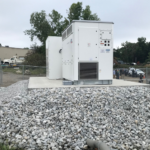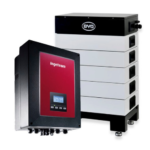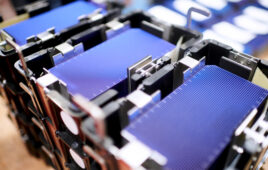 By Ravindra Nyamati, engineering manager, Energy Infrastructure Solutions Business Group, Delta Electronics (Americas)
By Ravindra Nyamati, engineering manager, Energy Infrastructure Solutions Business Group, Delta Electronics (Americas)
Environmental concerns around greenhouse emissions and worries about aging grid infrastructure are all factors driving the demand for PV inverters. The right string inverter can maximize the power output of a PV system, while the wrong one could reduce the system’s efficiency. Due to its critical role in solar power generation, the inverter market is growing exponentially, with analysts projecting that it will exceed $9.1 billion in the next five years.
Choosing the right string inverter for a PV system has never been more important — or more challenging. These are the key factors to consider.
Efficiency
This is usually the first variable when selecting a string inverter. To optimize solar production, the peak efficiency rating of an inverter should be as close to 100% as possible. The figure represents how much energy is lost while converting DC power from the PV panels to AC power at the capacity the inverter is rated for. The industry’s top inverters hold an efficiency rating of 98% or higher.
To ensure a high energy yield, it is critical to have a high DC/AC ratio, also known as inverter load ratio. Traditionally, load ratios have been 1.1 to 1.2. However, the pricing of PV panels continues to drop, leading to larger investments in this technology. In order to get more energy out of larger systems — while having the flexibility to connect more panels — the industry is embracing higher ratios of 1.5 or 1.7 within system designs. To achieve these ratios, it is critical to have inverters with high AC outputs.
To verify the performance of inverter technology, consider exploring the advice of third-party organizations, such as the PV Evolution Labs’ PV Inverter Scorecard, which shows the performance results of top inverters based on field testing — a great starting point for selecting an inverter.
Ease of installation
Look for string inverters that include mounting brackets that allow a single person to handle installation. Does the inverter have a slim profile and flexible mounting options? It’s very advantageous if an inverter can be mounted behind modules, on racking or directly on the wall. The closer the inverter is to the panel, the smaller the cable’s length and size, which saves on the balance of the system. This is key for larger installations, which could involve a technician covering significant ground to install and regularly maintain the system.
Another point to consider is pre-wiring. Pre-wired inverters with MC4 single-contact connectors streamline the installation process. This nearly replicates the “plug-and-play” model of consumer electronics. The time it takes to install a typical string inverter is about an hour. However, with flexible mounting options and pre-wiring, this can be cut to roughly 15 to 20 minutes per inverter even with only one installer.
Durability
When it comes to assessing durability, it is best to check the inverter’s NEMA rating. The rating explains the inverter’s ability to withstand various weather conditions, corrosion and dust. The geographical location of the solar system should be another consideration. Inverter technology can vary in its tolerance to temperature. The leading PV inverters can withstand ranges of -13°F to 149°F. If the installation is close to the coast, it is beneficial to seek a solution that’s coated with salt protection to withstand ocean breezes.
Connectivity
As inverters get smarter and more connected, the demand for such technology will continue to grow. Connectivity allows stakeholders to easily check system generation and inverter output from internet-connected devices. Pre-programmed alarms will trigger when the inverter approaches temperature thresholds or when operational anomalies occur. Since the inverter is connected to the cloud, solar O&M professionals can remotely diagnose the system. This is useful for both commercial and residential users.
Beyond individual inverter features, it is beneficial to view the solar system holistically. If the project also requires the installation of energy storage or power conditioning technology, then it will be easier to work with a vendor who can serve as a one-stop shop for these solutions. This will guarantee that the technologies work seamlessly together and make servicing any components much easier.
While every project is unique, inverters that feature the right combination of performance, durability, ease-of-installation and connectivity will undoubtedly make installation a breeze. Long-lasting and high-performing systems will help power continued solar adoption — bringing us closer to creating a greener and better world.
 Ravindra Nyamati is the engineering manager at Delta Electronics focused on solar inverters, energy storage and microgrid systems and projects. He brings 20 years of experience in power projects and electrical engineering design, solar power generation, off-grid/microgrid projects and energy storage solutions.
Ravindra Nyamati is the engineering manager at Delta Electronics focused on solar inverters, energy storage and microgrid systems and projects. He brings 20 years of experience in power projects and electrical engineering design, solar power generation, off-grid/microgrid projects and energy storage solutions.







Tell Us What You Think!